Abstract
A formula is given, allowing a value for total body fat to be calculated from skinfold thickness measurements at two sites (subscapular and triceps), in conjunction with nine body dimensions. For newborn infants total body fat so calculated accorded satisfactorily with published data from cadaver analyses. The formula has been tentatively applied to infants up to the age of 40 weeks, and to preterm infants. The difference between the growth of male and female infants was analysed in a series of 27 normal infants; the greater growth of musculoskeletal tissue in the male contrasted with the relatively greater growth of fat tissue in the female.
Full text
PDF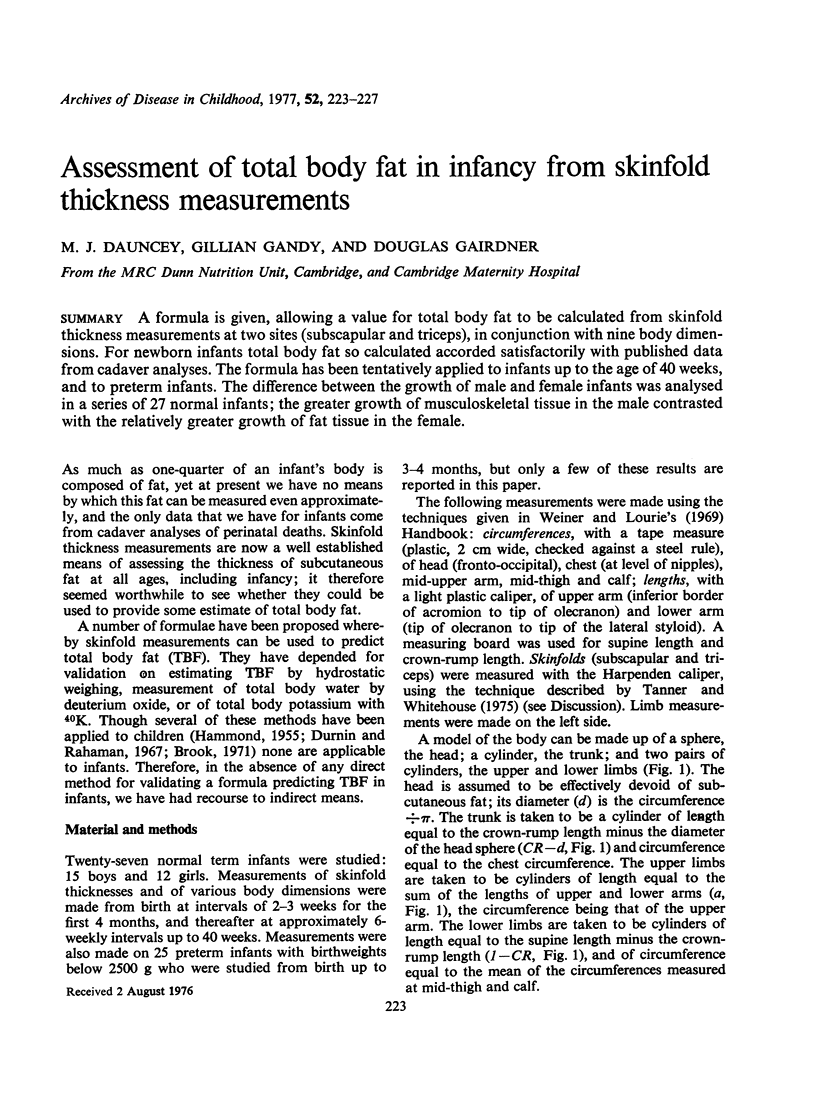
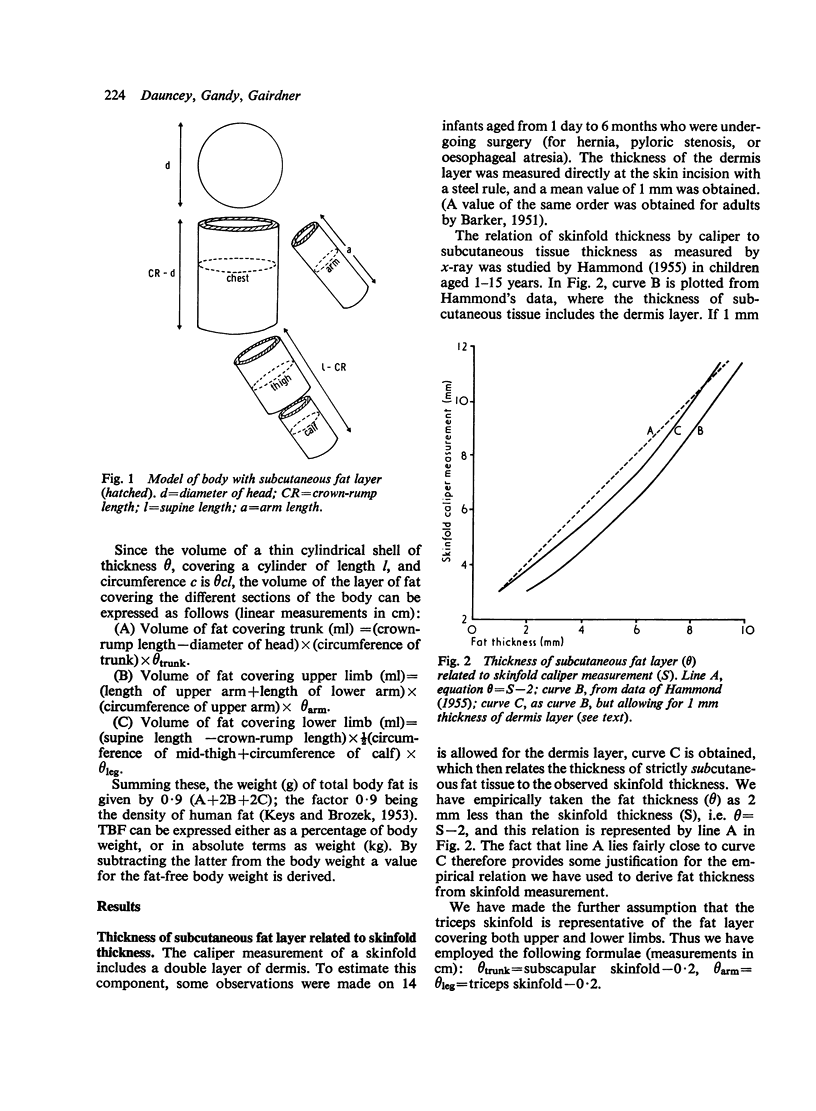
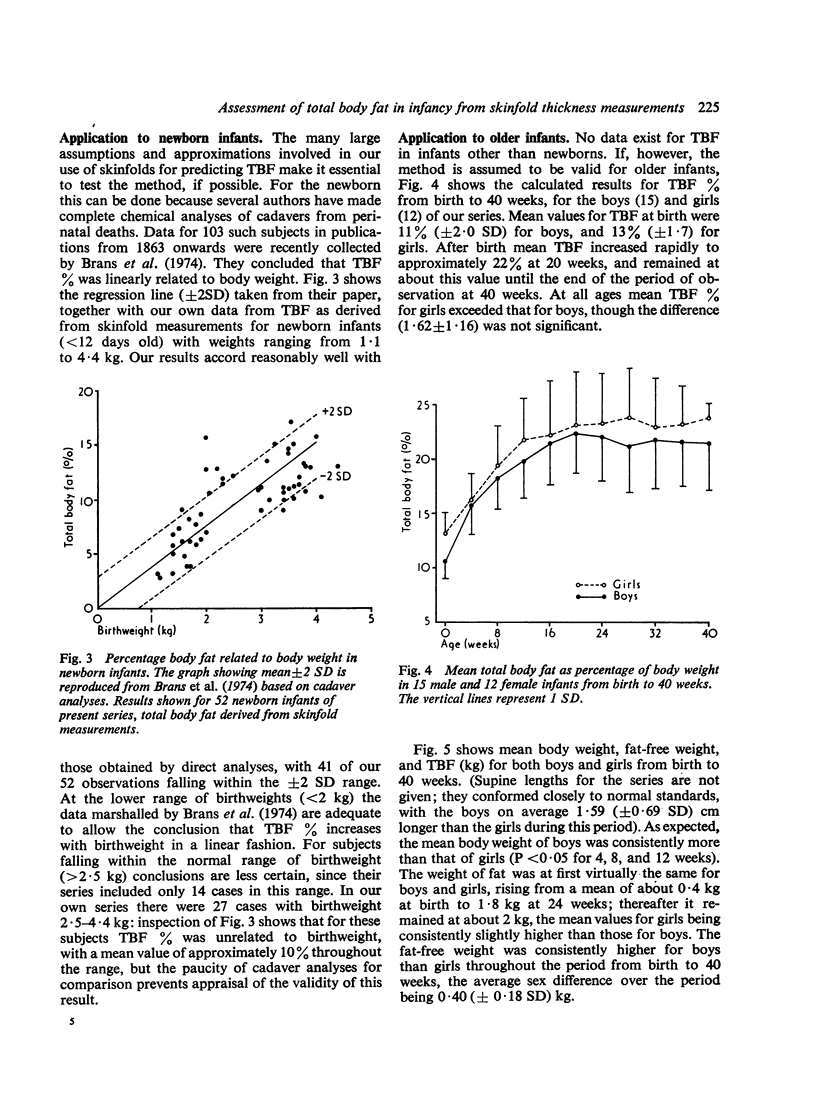
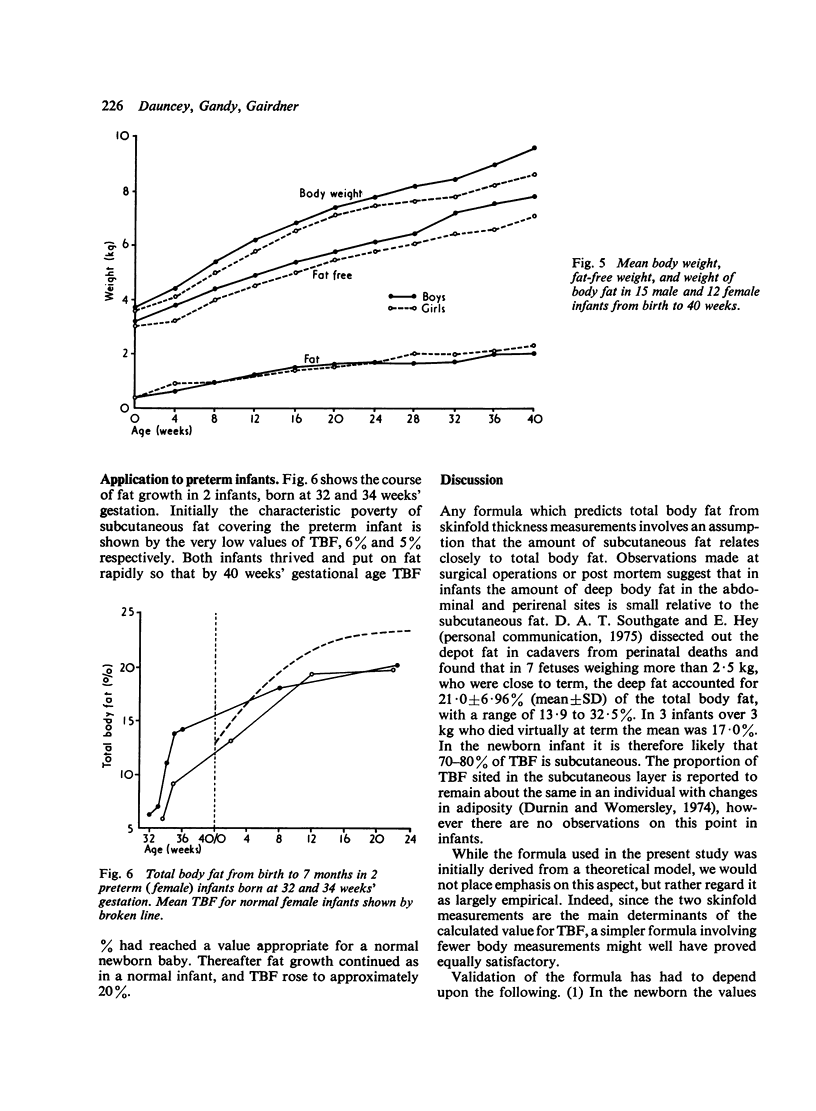
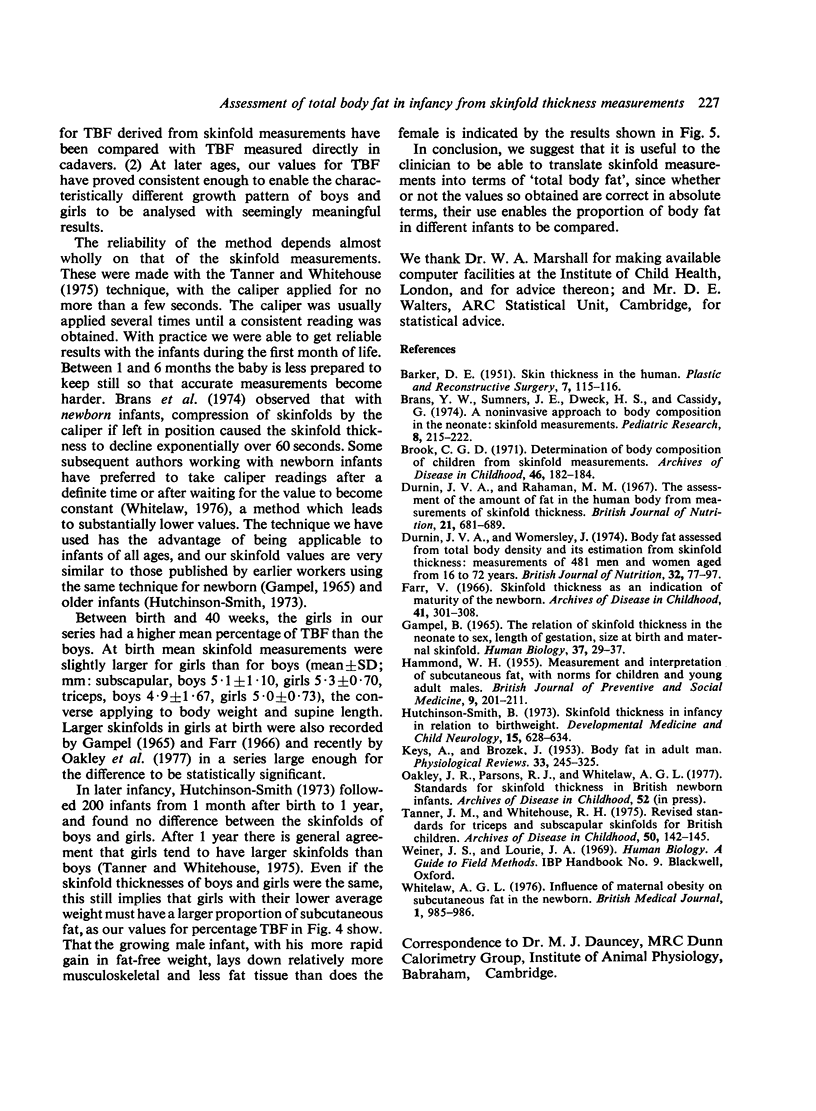
Selected References
These references are in PubMed. This may not be the complete list of references from this article.
- BARKER D. E. Skin thickness in the human. Plast Reconstr Surg (1946) 1951 Feb;7(2):115–116. doi: 10.1097/00006534-195102000-00004. [DOI] [PubMed] [Google Scholar]
- Brans Y. W., Sumners J. E., Dweck H. S., Cassady G. A noninvasive approach to body composition in the neonate: dynamic skinfold measurements. Pediatr Res. 1974 Apr;8(4):215–222. doi: 10.1203/00006450-197404000-00001. [DOI] [PubMed] [Google Scholar]
- Brook C. G. Determination of body composition of children from skinfold measurements. Arch Dis Child. 1971 Apr;46(246):182–184. doi: 10.1136/adc.46.246.182. [DOI] [PMC free article] [PubMed] [Google Scholar]
- Durnin J. V., Rahaman M. M. The assessment of the amount of fat in the human body from measurements of skinfold thickness. Br J Nutr. 1967 Aug;21(3):681–689. doi: 10.1079/bjn19670070. [DOI] [PubMed] [Google Scholar]
- Durnin J. V., Womersley J. Body fat assessed from total body density and its estimation from skinfold thickness: measurements on 481 men and women aged from 16 to 72 years. Br J Nutr. 1974 Jul;32(1):77–97. doi: 10.1079/bjn19740060. [DOI] [PubMed] [Google Scholar]
- Farr V. Skinfold thickness as an indication of maturity of the newborn. Arch Dis Child. 1966 Jun;41(217):301–308. doi: 10.1136/adc.41.217.301. [DOI] [PMC free article] [PubMed] [Google Scholar]
- GAMPEL B. THE RELATION OF SKINFOLD THICKNESS IN THE NEONATE TO SEX, LENGTH OF GESTATION, SIZE AT BIRTH AND MATERNAL SKINFOLD. Hum Biol. 1965 Feb;37:29–37. [PubMed] [Google Scholar]
- HAMMOND W. H. Measurement and interpretation of subcutaneous fat, with norms for children and young adult males. Br J Prev Soc Med. 1955 Oct;9(4):201–211. doi: 10.1136/jech.9.4.201. [DOI] [PMC free article] [PubMed] [Google Scholar]
- Hutchinson-Smith B. Skinfold thickness in infancy in relation to birthweight. Dev Med Child Neurol. 1973 Oct;15(5):628–634. doi: 10.1111/j.1469-8749.1973.tb05173.x. [DOI] [PubMed] [Google Scholar]
- KEYS A., BROZEK J. Body fat in adult man. Physiol Rev. 1953 Jul;33(3):245–325. doi: 10.1152/physrev.1953.33.3.245. [DOI] [PubMed] [Google Scholar]
- Tanner J. M., Whitehouse R. H. Revised standards for triceps and subscapular skinfolds in British children. Arch Dis Child. 1975 Feb;50(2):142–145. doi: 10.1136/adc.50.2.142. [DOI] [PMC free article] [PubMed] [Google Scholar]
- Whitelaw A. G. Influence of maternal obesity on subcutaneous fat in the newborn. Br Med J. 1976 Apr 24;1(6016):985–986. doi: 10.1136/bmj.1.6016.985. [DOI] [PMC free article] [PubMed] [Google Scholar]


